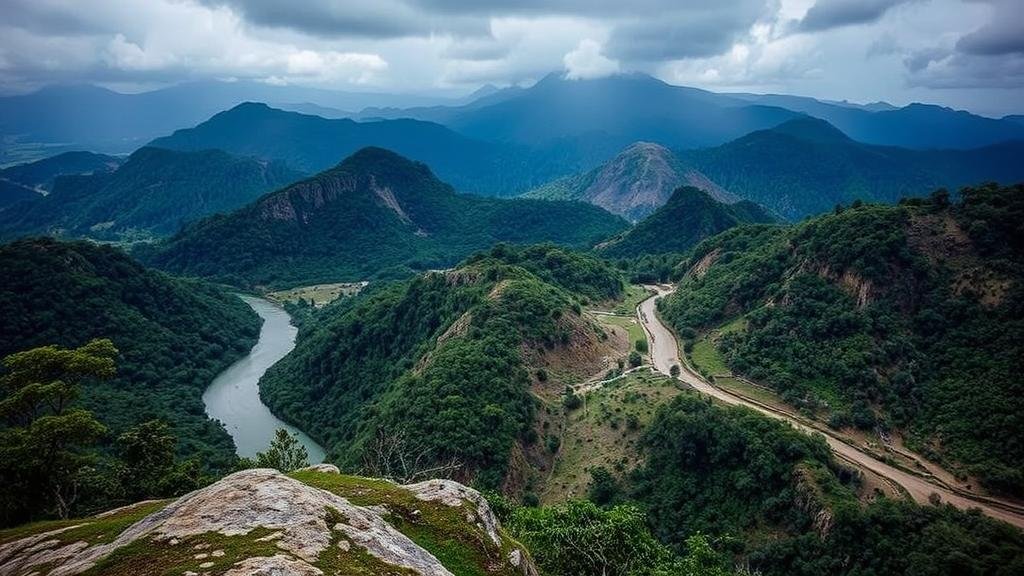Documenting cryptid sightings in unexplored regions as clues to biodiversity.
Documenting Cryptid Sightings in Unexplored Regions as Clues to Biodiversity
Cryptids, elusive creatures whose existence is often supported only by anecdotal evidence, have fascinated researchers and adventurers alike for decades. These reports from unexplored regions around the world may hold vital clues to biodiversity and the health of ecosystems. This article explores the importance of documenting cryptid sightings as a means to potentially discover new species and understand the complexities of our planets biodiversity.
The Intersection of Cryptozoology and Conservation
Cryptozoology, the study of and search for animals whose existence is not substantiated by mainstream science, plays a unique role in conservation efforts. By investigating sightings of cryptids, researchers can gather insights into lesser-known ecosystems, which could lead to the discovery of previously unidentified species.
For example, the Okapi, an animal once considered a cryptid, was formally recognized by science only in 1901, demonstrating how mysterious creatures can offer a glimpse into biodiversity. Cryptid sightings often emerge from remote areas, where ecological data is sparse. This absence of information creates a unique opportunity for researchers to study these ecosystems in greater depth.
Recent Sightings: Data and Implications
In recent years, several notable cryptid sightings have surfaced from unexplored regions across the globe. e cases provide context for understanding potential biodiversity in these habitats.
- In 2018, a group of researchers reported a sighting of the Mokele-Mbembe in the Congo River Basin. Locals have long claimed the existence of this dinosaur-like creature, and research indicates that the basin teems with undiscovered aquatic life.
- In 2020, hikers in the dense forests of the Pacific Northwest captured footage of what they claimed to be a Sasquatch, sparking renewed interest in this regions wildlife diversity and the need for further ecological study.
Documenting these sightings not only fuels public interest in cryptids but also signals potential hotspots for biodiversity research. Researchers have begun to approach these accounts scientifically, assessing their validity and impact on conservation efforts.
Cultural Legacy of Cryptids
Every culture has its own narratives around cryptids. For example, Native American stories of the Wendigo or the Abenaki legends featuring the Mischievous Little People often reflect environmental values and local ecosystems. These cultural accounts can guide researchers to specific locations and habitats worth studying.
Anthropologists and biologists can collaborate to learn not only about the potential biological existence of these creatures but also about the ecological significance of the stories behind them. By respecting and incorporating local knowledge, scientists can enhance their understanding of regional biodiversity.
Challenges in Cryptid Documentation
Despite the intriguing nature of cryptid documentation, several challenges persist:
- Lack of funding for cryptozoological studies means many researchers work without sufficient resources.
- Digital imagery and evidence can often be misleading or manipulated, complicating verification efforts.
Also, the skepticism surrounding the scientific community can hinder serious investigations into reported sightings. Yet, even amidst these challenges, the potential benefits of studying these phenomena cannot be overlooked. Improved methods of documentation, such as the use of camera traps and drone technology, can help validate claims and enrich biodiversity data.
Real-World Applications and Actionable Takeaways
Researchers and policymakers can take several actionable steps to transform the documentation of cryptid sightings into valuable biodiversity insights:
- Establish interdisciplinary teams that combine the expertise of ecologists, anthropologists, and cryptozoologists.
- Engage local communities in collecting data and documenting sightings, thus fostering goodwill and conservation awareness.
- Use advanced technology, such as remote cameras and mapping tools, to survey unexplored regions effectively.
To wrap up, documenting cryptid sightings in unexplored regions can yield significant clues to understanding biodiversity. By marrying scientific inquiry with cultural narratives, researchers can delve deeper into our planet’s mysteries and potentially uncover new species, illuminating the interconnectedness of all living organisms.



